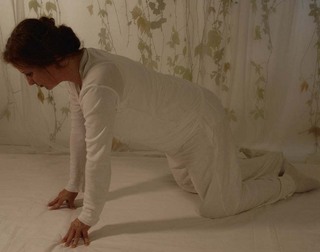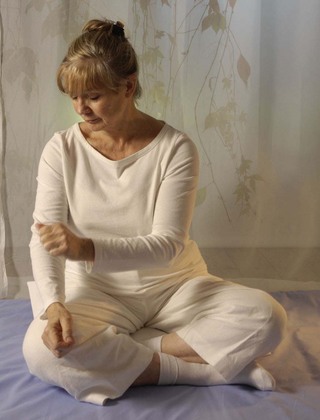CHAPTER 6 Self-development, health care and injury prevention for the Shiatsu practitioner
As practitioners of ‘energy medicine’, we must care for our instrument of practice – our self. Our own body and the energy field which surrounds and permeates it constitute the vital tool of our trade, the instruments by means of which we diagnose and treat. Subtly adjusted to exactly the right wavelengths to register minute variations in the human field, our own field is a better diagnostic tool than any electroencephalogram, a better instrument for correcting and connecting than any TENS machine. Our only barriers to gaining better, fuller use of this extraordinary tool are our own reluctance to appreciate it and our resistance to accepting its readings. We have to train our mind as well as our body and adjust our patterns of behavior in order to pay close attention to our own sensations, including the subtle ones, without judging ourselves as self-obsessed or fantasists.
Exercise
Hands
• The ‘medicine balls’ widely on sale as hand exercisers can be a useful start.
• A simple exercise for hands taught by Pauline Sasaki is to kneel in the ‘crawl’ position on a mat, with the weight of the upper body on the thumbs and fingertips instead of the palms. From this position we can circle our weight from hand to hand, forward and back, not tensing up the hands, arms and shoulders, but allowing a combination of alignment and gravity to make the movement smooth (Fig. 6.1).
Feet
• Sitting in seiza (Japanese style kneeling) is an exercise for stretching the feet and ankles – but don’t sit for extended periods of time in seiza, as it may obstruct the circulation in your knees in the long term.
• Rising on tiptoe and sinking back to the heels again 10–20 times is another simple exercise. You can make it an exercise for the whole body by swinging your arms forwards and up as you breathe in and rise on tiptoe, back and down as you lower your heels and breathe out (bend your knees a little as your hands come down).
• It is also possible to buy shoes which mimic the action of walking on unstable ground, and these can be very strengthening for weak feet and ankles.
Relaxation
Tension is the enemy of good Shiatsu practice, and learning to relax is a skill we need to acquire. Exercise is a good muscle relaxant, especially the Ki awareness exercises mentioned above. For stubborn areas of muscle tension, self-massage or Do-in can be very helpful (Fig. 6.2).
Stay updated, free articles. Join our Telegram channel

Full access? Get Clinical Tree










